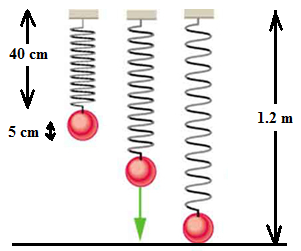FREE EIAT Mechanical Question and Answers
As seen in the illustration, three identically sized balls made of the materials K, L, and M are floating in the water. The items are being acted upon by buoyant forces FK, FL, and FM.
Which of the aforementioned statements about these forces is true?

Which way does the grey wheel rotate? (Mark C if neither.)

Explanation:
A linear velocity changes to an angular velocity when the rack (toothed belt) comes into contact with the cogwheels. The point of contact's location is crucial.
The lower portion of the red cogwheel is where it comes into contact with the rack. The linear velocity to the right is induced by the counterclockwise angular velocity.
The upper portion of the grey cogwheel is where it comes into contact with the rack. The rack-determined linear velocity to the right causes a clockwise-moving angular velocity.
What are the differences between gear 3's rotational direction and speed (angular velocity) and gear 1's?

A 40cm spring suspended on a hook 1.2m above the ground has a constant 2000 N/m force. At the spring's low point, a solid sphere with a 5 cm radius is suspended. What is the solid sphere's maximum weight without touching the ground?

There is a whistle from a railroad. 5 seconds later, there is an echo. How far away is the reflecting surface if the speed of sound is 343 m/s?
A 24 cm converging lens is 12 cm away from an object that is 10 cm high. How high is the image this lens creates?
Which way is the wheel going to turn? (Mark C if neither.)

Explanation:
The leftmost two wheels are connected by a band. The band moves in response to the clockwise rotation of the bottom wheel (blue arrow), which in turn causes the top wheel to rotate counterclockwise. The band is crossed, which is why.
Due to the rod connecting the two wheels at the top, they both rotate in the same direction. The aforementioned wheel will rotate counterclockwise because it is connected by a straight band to the wheel at the top right.